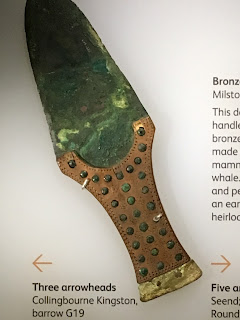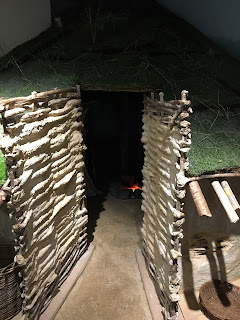Hand axes were fashioned over a stonking million years! I honestly fail to believe how humans would just do the same thing over and over again for a million years, sorry, but there is no way I’m falling for that ‘interpretation’ on the hard fossil evidence. One thing is for sure, no matter when you’re born, people have had a deep reverence for their dead and the long long line of continuity that people are part of.
My feeling is that handaxes were used to break open bones to suck out bone marrow which is what humans lived on before they started cooking barbies. Ask yourself, why continue to make handaxes when you were not using them anymore for their intended purpose? Well it turns out then we started to make huge handaxes out of jadeite that were never used but important items to own. Continuity see...
The debate about handaxes goes on and I for one soak it all up but apply liberal pinches of salt to such interpretations and wish I could own one of these things. They jury is still out about handaxes, but make no mistake they were everywhere, I mean everywhere.
So here’s a great image from the front of the Wiltshire museum floor plan showing a handle for a descendant of the handaxe.
Just look at the handle on that dagger!
Now here’s a better picture of the item itself. You can just make out the gist of the catalogue entry.
Just look at the fine work on that thing. I didn’t manage to photograph the museum catalogue entry but there’s always a next time.
Just look at this Bronze Age jug. Usually you don’t see any wood, but this time you do, lots of yummy ancient wood.
And here are some bowls, they might be shields, but if they are, they’re very small, so I’m going with the bowls theory.
Now here’s a picture of a recreated dwelling, you can walk inside and I think it’s so much better than a picture or miniature model ever could be. It felt very cosy and safe.
All of this evidence was gathered from around the Stone Henge area, which is dripping in ancient history, echoes, vibrations, shadows and.........magnetism. Hold that thought!
Now this image above here is very interesting. So this is a model of Stone Henge made about 200 years ago. What’s interesting is that it shows there were many more slabs of rock around then and there was a whole heap of stuff going on. What struck me was the configuration of the main slabs, this is exactly as ancient man would have seen it. I say this because you have to remember Stone Henge was dismantled during World War II. I’ve always been suspicious of the configuration since I heard that, because it could be a tad ‘neat‘ and ‘mathematical‘ in its reinstatement, if you know what I mean?
Finally here’s a lozenge with its blurb
I adore the Wiltshire Museum and gladly pay my entrance fee.
Most entrance fees are optional, so some I pay, some I don’t. This one gets paid.
It’s a dinky museum but truly stuffed with goodies.





























No comments:
Post a Comment